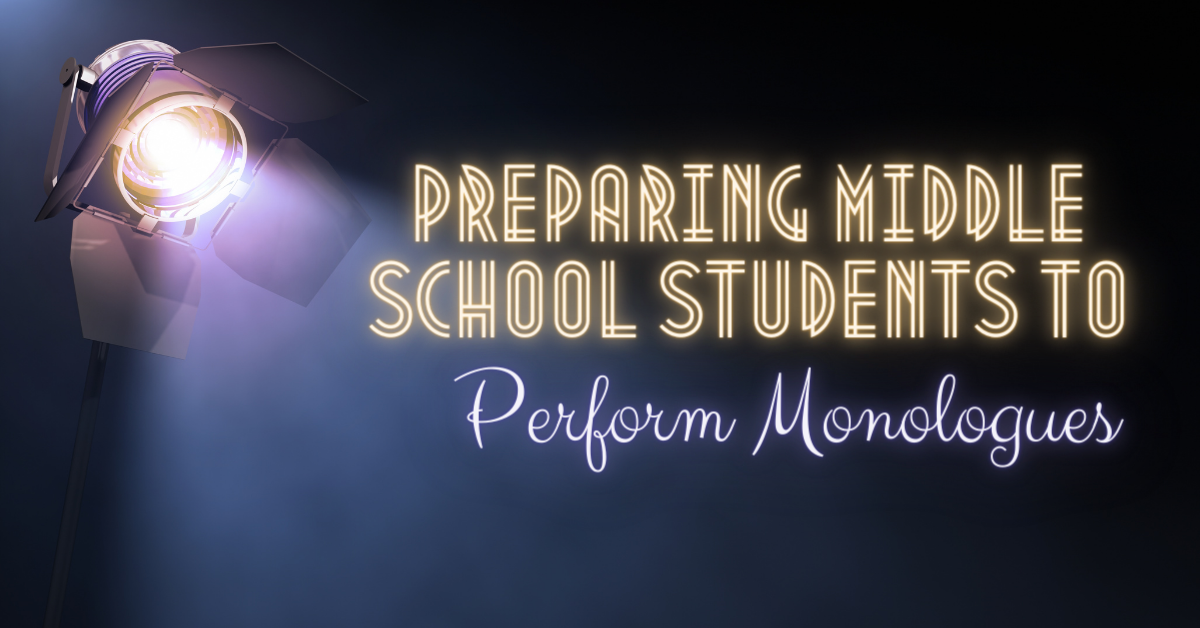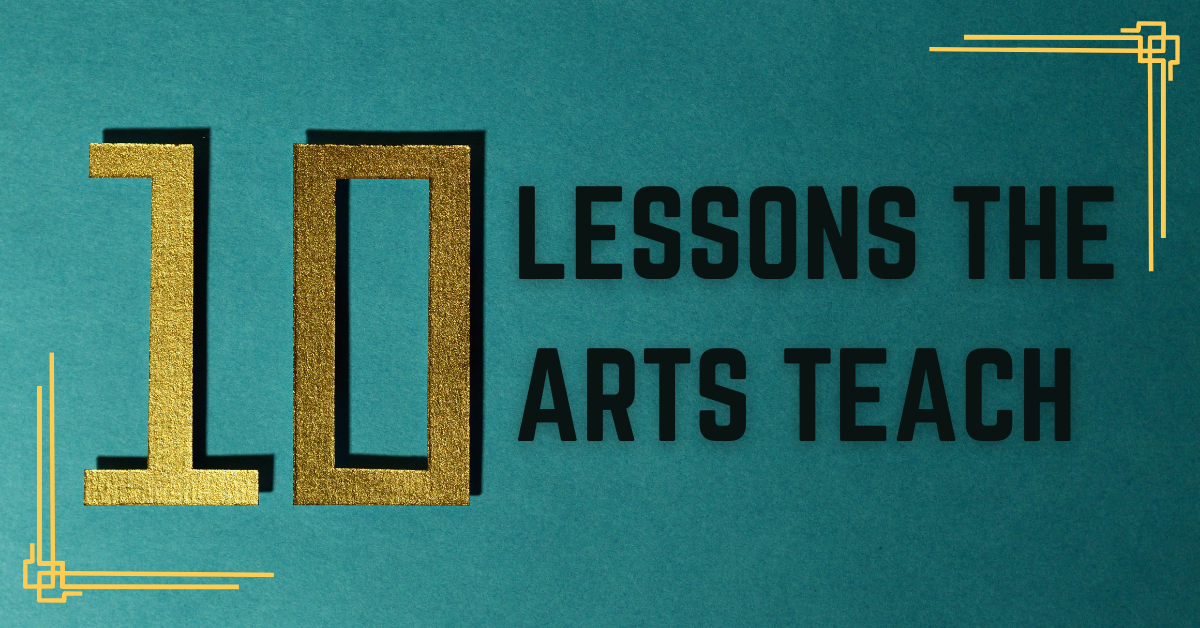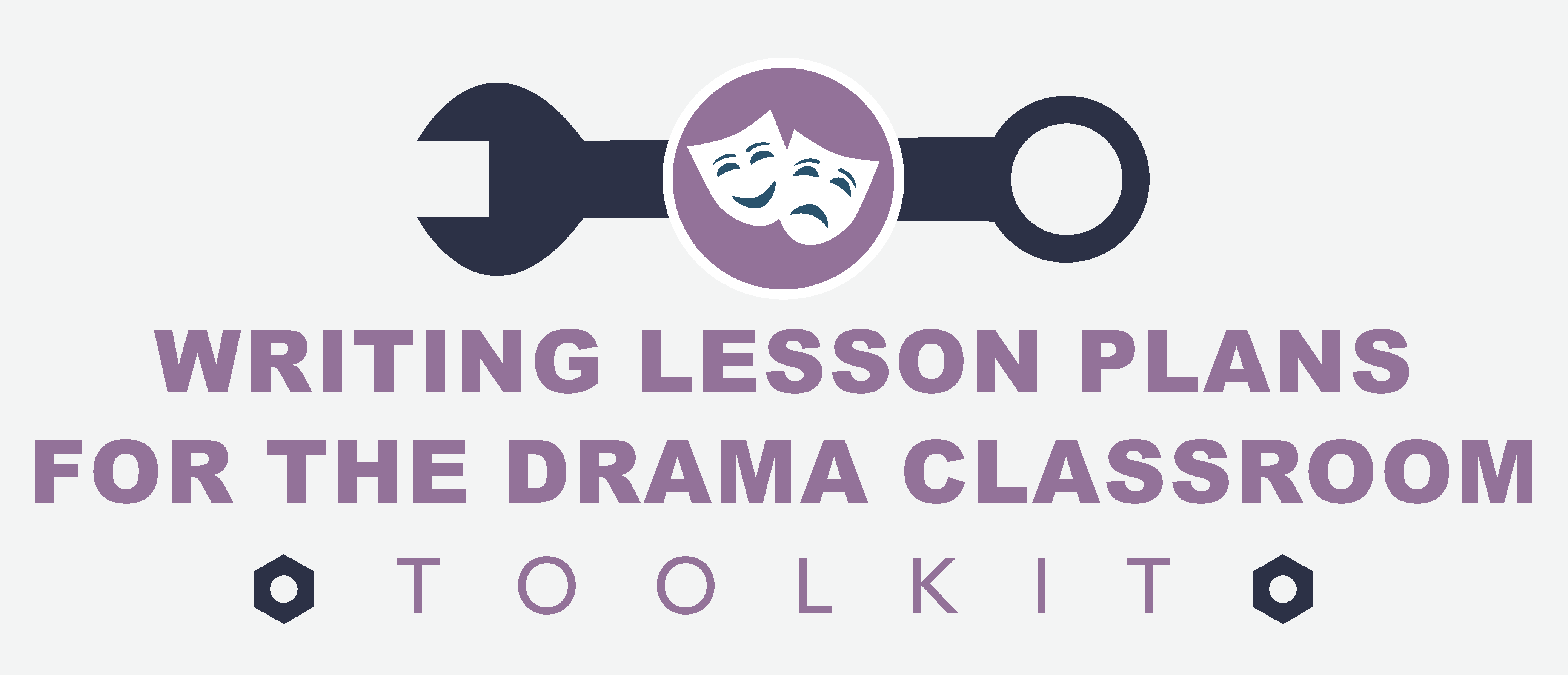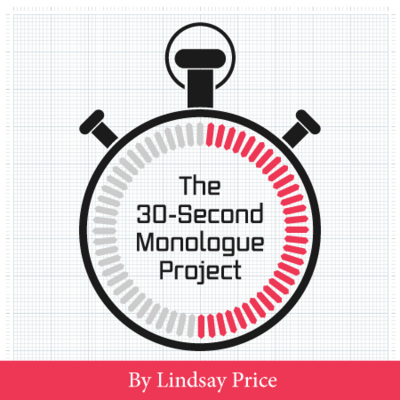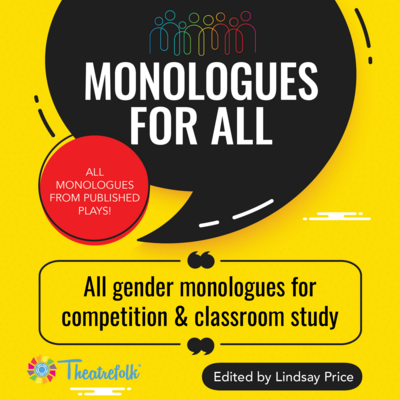Preparing Middle School Students to Perform Monologues
I recently adjudicated monologues at a Middle School Drama Festival and saw a lot of students trying their very best. They left it all on the table and amazed me.
But I also saw students overcome with nerves, students unable to grow their characters beyond memorizing their lines, and students who couldn’t get out of their own bodies to physicalize the monologue.
When I adjudicate, I’m looking for three things:
- Confidence
- Character
- Character-driven movement
Or more descriptively:
- An actor with the confidence to sell those two minutes with everything they can muster.
- A strong three-dimensional character.
- Gesture and movement that comes from the heart of what that character is going through in the monologue.
These three elements are the bedrock of every great performance – not just in middle school, but on any stage.
Confidence
It is nerve-wracking to perform in front of others, especially in a competitive environment. Students can practice for days, know that monologue inside out, then lose it all when they step in front of a panel of judges.
I’m terrified of public speaking. It really scares me. But over time I’ve learned what I need to do to overcome my fears and stand on a stage with confidence.
Breathing
You’ll be amazed at what a little breath control can do. If you have control of your breath, that means you’re calm. It means you will be able to speak in full voice. It means your body is relaxed. These are all necessary elements when you want to perform with confidence.
The nerves usually hit when students are waiting to perform. In a competition situation they may be sitting in the same room with their fellow competitors. Nothing can drain confidence like seeing someone else perform a piece that looks like a winner.
The next time your students are waiting to perform encourage them to try these exercises.
- Sit quietly and close your eyes. Breathe in slowly on a two count and out for a two count. Breathe in slowly on a four count and out for a four count. Breathe in slowly for a six count and out for a six count. Breathe in slowly for an eight count and out for an eight count. For each of these rounds, focus only on the in and out of your breath. Keep your eyes closed and try to block out any outside noise. Count the breath slowly in your head, and above all else, keep your count consistent. Don’t rush. If eight beats is too long, dial it back down to six or four. The aim is not to see how long you can hold your breath, but to maintain control of your inhale and exhale.
- Say your first line over and over in your head. The first line is always the hardest to get out and the easiest to forget. So repeat that first line like a mantra.
- Fake it till you make it. When you are afraid, don’t say anything. Don’t let on how scared you are. Especially don’t tell the adjudicators. Don’t use nerves as an excuse. Smile and go on stage and do your best. Never give anyone a reason to second guess your work. Do your best and smile, smile, smile your way through it.
Character
The text of the monologue doesn’t tell you everything you need to know about the character. The more you know, the more the monologue will transcend beyond being just words on a page. As an adjudicator, I don’t want to see an actor performing a monologue. I want to see a character having an experience.
Question and Answer
Have your students answer the following questions about their character:
- Who is this character? What details do you know about him/her?
- What details do you need to create to fill in the blanks?
- Who are they talking to? What is their relationship with that character?
- Why are they talking? Why is it important to share this monologue?
- Why is this monologue important for this character?
- How does the character transform from the beginning of the monologue to the end?
Understanding the “what” in the monologue (i.e. the content) is important, but it’s not as important as the “who” and the “why.” The “who” and “why” are where you find the character’s depth. This will show an adjudicator that you understand your character and the purpose of their monologue.
Character-Driven Movement
More often than not, students stand and move like themselves when they perform. They shift their weight from one foot to the other. They fidget with their clothes and hair. They lean into one hip. They swing their feet when they sit.
If you do only one thing with your students, get them to focus on character-driven movement.
That means every single twitch, every single shift of the feet, every single hair twirl has to come from the character.
Every gesture must be chosen. Every time a student stands or sits it has to be because the character wants to, not because the student thinks they should throw some movement into their piece.
This is how a monologue becomes more than memorizing lines. This is how a monologue becomes an experience – not only for the student, but for everyone watching as well.
Physicalization Exercises
Character Animal
- Pretend your character is an animal. How would they move about the space as an animal? At what pace would they move? Would they creep? Would they pounce? Would they soar?
- Do a “day in the life” non-verbal improv where students imagine their character in animal form. As an animal, what would they do all day?
- Choose one animal movement and add it to your monologue. How does that change the piece?
Spatial Exploration
Most student actors only stand straight up and down. They never stand on a chair, stand on their tip-toes, crouch down, fall to their knees, lie on the floor, or move from side to side.
- Students explore the room exploring the three levels of space: high, middle, and low. What kind of movements establish each level of space?
- As a rehearsal exercise students perform their monologue but they’re not allowed to use the middle space. They must always be up high or down low.
- Discuss with students how this awkward use of space affects the piece. How does it change when performed this way?
Rehearsal Recording
- Videotape a practice session. Show students what they look like. Most times students have no idea they have any tics at all, it’s unconscious movement. Emphasize to students that all movement must be conscious and specifically chosen.
Pairs Performing
- Practice monologues in pairs: one performer, one observer. Every time the performer shifts their weight, or fidgets the observer raises their hand. How often does that happen?
Explain Your Blocking
- Students should only move during a monologue because the character would move. Have students show you their monologue blocking and explain each move. If they don’t have a reason, they either have to come up with one or strike the move.
Emotion Movement
- Analyze each sentence in the monologue. Define the emotion in each sentence. What is the character feeling with each line?
- With each emotion, define an action that fits that emotion.
- As a rehearsal exercise, say each line and perform each action.
- Discuss what it’s like to perform the monologue this way. How does it change?
- Have students perform the monologue with just the actions, no words.
- Discuss with students what it’s like to perform the monologue with just action.
- Discuss and decide if there places where the monologue supports an emotional action.
Confidence, Character, Character-Driven movement. Bring these three elements into your middle school students’ rehearsal process and they’ll take their performances to the next level.
Related Articles
The 30-Second Monologue Project
by Lindsay Price
Give students the confidence, skills and tools they need to master the monologue with The 30-Second Monologue Project. This four-lesson unit guides students from the first moment to a successful performance.
Monologues for All
by Lindsay Price
Many monologue books have monologues with only male- or female-identified characters. This resource allows students to infer the identity of the character.
